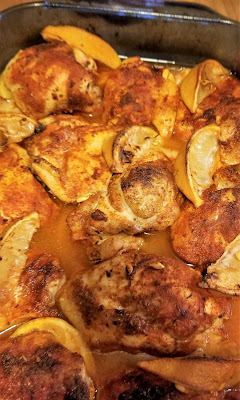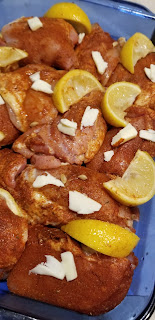International Flavors ~Africa~ Morocco
This post contains affiliate links - using affiliate links from Homeschool Coffee Break helps fuel this blog.
One of the things I really liked doing with my kids when we studied geography was to learn about the foods that are associated with different regions, ethnic groups, or people groups. There were a few school years when we made it an ongoing project to try foods from the countries or regions we studied. It's been a few years since we did that as part of our homeschool, but I still find it interesting - and honestly, I need some help and fresh ideas for meal planning too. I don't have a great system for planning these international inspired meals, but am trying to get something a little out of our ordinary on the table every once in awhile.
On November 18th, Morocco marked its Independence Day, a national holiday commemorating the nation's independence on the date King Mohammed returned from exile in 1955. Since the mid-seventeenth century, Morocco has been ruled by the Alaouite dynasty, but in the nineteenth century the influence of European countries grew stronger. After a war with Spain, Morocco had guaranteed its independence, but France had an increasing influence, and Germany got involved to agitate France and Great Britain. In 1912, Morocco was forced to sign a treaty making it a French Protectorate. Although still a sovereign nation, Morocco was ruled by a colonial administration. In 1953, amid rising calls for Moroccan independence, King Mohammed V was exiled to Madagascar. Moroccan demands for independence grew, and on November 18, 1955, the king returned and negotiations for formal independence began.
Did you know? In Arabic, the country's name means "place the sun sets"? The English name Morocco is based on the former capital city, Marrakesh. Morocco is in north Africa, on the Atlantic coast. Spain is to the north. The Strait of Gibraltar is located between the two countries, and is the passage from the Atlantic Ocean to the Mediterranean Sea. Algeria lies to the east, and the territory of Western Sahara is to the south. Morocco has Atlantic and Mediterranean coastlines, includes part of the Saharan desert, and much of the country is mountainous, with the Atlas Mountains in the south and center and the Rif Mountains in the north. The capital city is Rabat, and the largest city is the port of Casablanca. Morocco has several climate zones, but is mostly Mediterranean and Continental.
A majority of the population has Berber origins and Islam is the dominant religion. The culture has been influenced throughout its history by Phoenicians, Jews, Arabs, Sub-Saharan Africans, Romans, and Andalusians.
With all those influences, the culture and cuisine of Morocco is pretty diverse! Cuisine is a fusion of Moorish, European, and Mediterranean. They use a lot of spices and citrus fruit, and the most widely eaten meat is chicken. Lamb is a preferred red meat, but because its expensive, beef is more popular. The national delicacy, and the dish many people associate with Morocco is couscous.
Cinnamon, cumin, ginger, saffron - all taste and smell so good! These spices are used in meat and vegetable dishes as well as in sweet dishes. Apparently couscous isn't that difficult to make steamed in the traditional way, but it takes more time, so personally I'm fine with just using the stuff out of the box. Tagine is a conical clay cooking pot used for slow cooking meats and vegetables, and the foods cooked in these pots are also called tagine. I thought about cooking a version of the classic dish, but went simpler with a baked chicken dish.
Let's eat! My version of the recipes and some links to more are included below. Our Moroccan menu was Baked Moroccan Chicken Thighs, Couscous (courtesy of a Near East mix), and Moroccan Carrot and Orange Salad.
Baked Moroccan Chicken Thighs (based on the recipe at The Stay-at-Home Chef)
Slice one lemon into thin slices and place in the bottom of a greased baking dish. Slice another lemon into wedges. Mix up the spices (2 tsp paprika, 1 tsp cumin, 1 tsp oregano, 1/2 tsp cayenne, 1/2 tsp salt, 1/4 tsp cinnamon, 1/4 tsp ginger) and rub on 3 pounds worth of boneless chicken thighs. Put those on top of the sliced lemons. Squeeze the lemon wedges over the chicken and toss the wedges in there. Dot it all with little chunks of butter. Bake uncovered for about 45 minutes.
Moroccan Carrot and Juicy Orange Salad (found at Global Table Adventure)
Peel and finely grate a generous pound of carrots. Add a generous cup of high pulp orange juice. Sprinkle with a couple tablespoons of sugar and a teaspoon or so of cinnamon and stir it all together. Before serving dust a little more cinnamon on top.
To make this right, it should have orange blossom water in it, but that's something I couldn't find on short notice. Ideally I would have also used fresh squeezed oranges instead of orange juice, and I would have served it in little tea glasses. I'm not that fancy or that dedicated. My carrot salad went in a big glass bowl and it still looked pretty, although my picture of it did not. It was blurry and thus does not appear here.
I feel like I will have to try making Moroccan Honey Buttered Semolina "Cratered" Pancakes for a lunch or breakfast sometime. I mean - honey butter? Yes, please.
I could have made Za'atar Bread to go with this meal, but my oven was full of chicken.
Don't miss a coffee break! Subscribe to Homeschool Coffee Break by Email!
©2006-2020 Homeschool Coffee Break. All rights reserved. All text, photographs, artwork, and other content may not be reproduced or transmitted in any form without the written consent of the author. http://kympossibleblog.blogspot.com/
We are a participant in the Amazon Services LLC Associates Program, an affiliate advertising program designed to provide a means for us to earn fees by linking to Amazon.com and affiliated sites.







